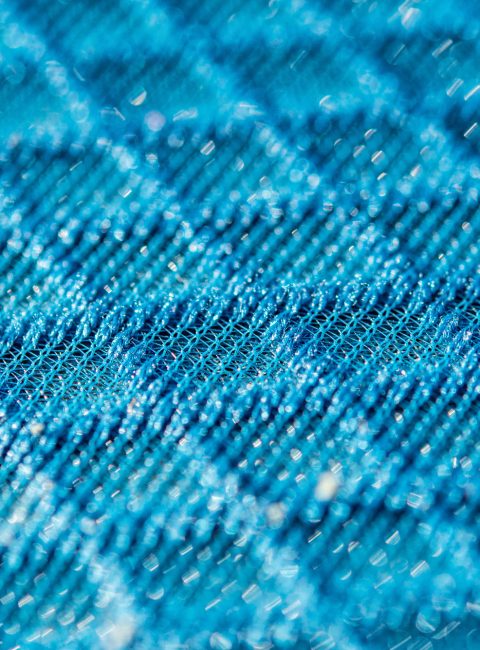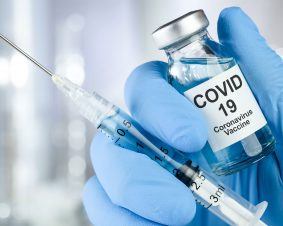 >
Spotlight February 2023: New sustainable and promising method to give cotton textiles an antiviral and antibacterial finish
>
Spotlight February 2023: New sustainable and promising method to give cotton textiles an antiviral and antibacterial finish
Textiles have been the subject of research into functionalization for many years, especially also to repel bacteria and viruses. Since the development of nanotechnological processes, there have been many attempts to incorporate UV protection with nano-titanium dioxide, or to provide textiles with anti-bacterial properties with nanosilver (see cross-sectional text “Nanoparticles in Textiles”). But nanosilver has come under discussion because the particles are washed out of the textile after a few washing processes and the function is thus weakened or lost, but also the resource silver is relatively rare and the environment is polluted with the washed-out silver.
There is a recent study that uses a completely different element to functionalize cotton fibres and make them permanently anti-viral and anti-bacterial: copper! The process of functionalization is very sustainable because the solutions/lyes can be reused and only the copper itself has to be added for a new run. However, the amount of copper is relatively small, and the tests of the study showed that the functionalization is maintained even after up to 1000 washings, whereas the textile made of cotton reached its end of life after only 200 washings.
The process of functionalization is simple and upscalable, the distribution of copper ions in the fabric is very uniform (no particulate deposition, but ionic bonds). Tests with various viruses and bacteria have shown that this tissue is very efficient in killing these pathogens. Even mechanical stresses, such as crumpling or folding, do not reduce the lasting effect. The blue coloration by the copper has the additional advantage that especially for clinical staff the clothes do not have to be dyed separately, which also contributes to the sustainability of the product. Copper is much cheaper than silver, which makes it possible to provide certain textiles with simple, cost-saving, effective and long-lasting anti-viral and anti-bacterial properties without harming the environment.
Original publication:
Qian, J.; Dong, Q.; Chun, K.; Zhu, D.; Zhang, X.; Mao, Y.; Culver, J.N.; Tai, S.; German, J.R.; Dean, D.P., et al. Highly stable, antiviral, antibacterial cotton textiles via molecular engineering. Nat Nanotechnol 2022.

Weitere Spotlights
Spotlight February 2021: Nanoobjects in the COVID-vaccine – scientifically correct?
The COVID-19 pandemic induces very different reactions of people on the internet (https://www.cdc.gov/mmwr/volumes/70/wr/mm7002e1.htm) and in the social networks. Without following the conspiracy theories as “5G nanochip hidden in COVID vaccines” some news as “COVID vaccines induce allergic reactions” should be scientifically recognised. The picture from the 5G-nanochip whose plan goes viral on the internet is […]
Read moreSpotlight April 2022: A new risk assessment of nanomaterials in 3D printing is needed
The use of nanomaterials in 3D printing has great potential. Due to the properties of nanoscale materials, many requirements can be implemented in 3D printing. However, these unique properties based on the size of the particles also lead to the need for new risk assessments. This is because if the nanoparticles are released in the […]
Read moreSpotlight October 2023: Improved hydrogen production through novel catalyst made of three metals
Hydrogen is one of the important energy carriers of the future when it comes to climate-relevant energy supply. For example, surplus electricity from wind turbines or solar plants can be converted into hydrogen, allowing the otherwise unused energy to be stored for longer periods. This hydrogen can be used to power trucks and buses for […]
Read moreSpotlight November 2021: Safe Materials from Scratch – Safe-by-Design in Materials Research
Advances in the field of materials science continue to amaze us with nanoscale materials with extraordinary chemical, electrical, optical, and numerous other properties. However, some nanoscale materials have different toxicological profiles compared to the same bulk material. Since safety issues are usually addressed just before launching a product into the market, safety issues may be […]
Read more

